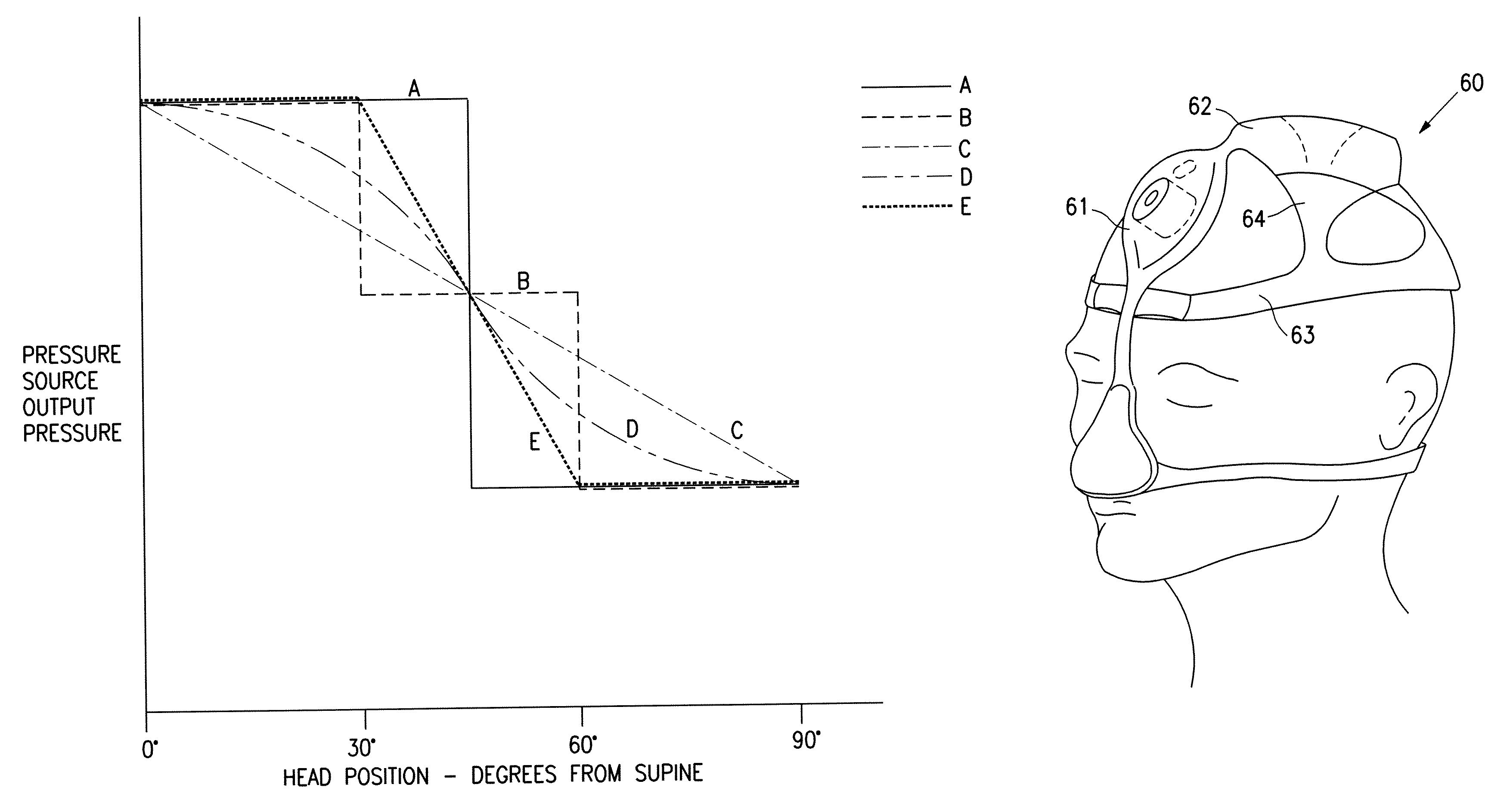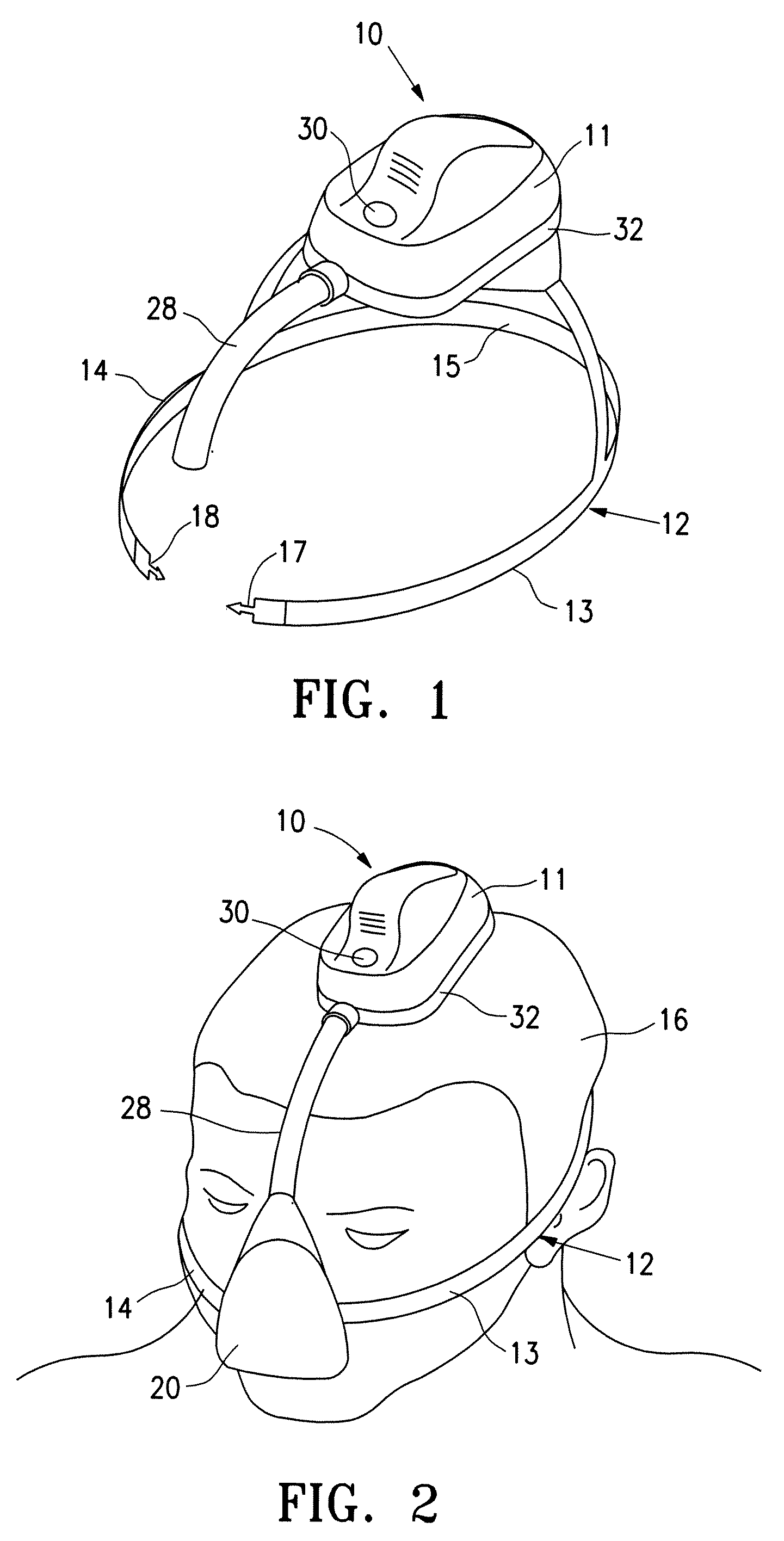Positive airway pressure system with head position control
a positive airway pressure and head position technology, applied in mechanical equipment, valves, operating means/releasing devices, etc., can solve the problems of blood oxygen drop, restorative sleep, blood carbon dioxide rise, etc., to improve patient comfort, reduce gas pressure, and less noise
- Summary
- Abstract
- Description
- Claims
- Application Information
AI Technical Summary
Benefits of technology
Problems solved by technology
Method used
Image
Examples
Embodiment Construction
[0064]FIGS. 1-3 are perspective views of a PAP system 10 embodying features of the invention. As shown, the system 10 basically includes a system housing 11 and a harness assembly 12 secured to the bottom of the housing. The harness assembly 12 has a plurality of straps 13 and 14 and cross strap 15 to secure the housing 11 to a patient's head 16 as shown in FIG. 2. The free ends of straps 13 and 14 have push in type connectors 17 and 18, as shown in FIG. 1, for securing the free ends to mask 20 as shown in FIG. 2. The straps 13-15 hold the mask 20, as shown in FIG. 2, in a sealed engagement with the patient's nose 21.
[0065]As best shown in FIGS. 4 and 5, the interior 22 of system housing 11 contains a compressor 23, a controller 24, a position sensor 25 and batteries 26 and 27 to supply electrical power to the compressor 23. A gas delivery tube 28 is secured to the discharge 29 of the compressor 23 and extends to the mask 20 for the delivery of a breathable gas to the patient's nose...
PUM
 Login to View More
Login to View More Abstract
Description
Claims
Application Information
 Login to View More
Login to View More - R&D
- Intellectual Property
- Life Sciences
- Materials
- Tech Scout
- Unparalleled Data Quality
- Higher Quality Content
- 60% Fewer Hallucinations
Browse by: Latest US Patents, China's latest patents, Technical Efficacy Thesaurus, Application Domain, Technology Topic, Popular Technical Reports.
© 2025 PatSnap. All rights reserved.Legal|Privacy policy|Modern Slavery Act Transparency Statement|Sitemap|About US| Contact US: help@patsnap.com



